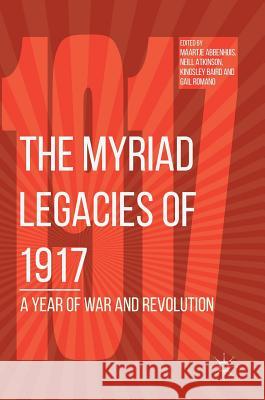The Myriad Legacies of 1917: A Year of War and Revolution » książka
topmenu
The Myriad Legacies of 1917: A Year of War and Revolution
ISBN-13: 9783319736846 / Angielski / Twarda / 2018 / 299 str.
Kategorie BISAC:
Wydawca:
Palgrave MacMillan
Język:
Angielski
ISBN-13:
9783319736846
Rok wydania:
2018
Wydanie:
2018
Ilość stron:
299
Waga:
0.67 kg
Wymiary:
21.0 x 14.8
Oprawa:
Twarda
Wolumenów:
01
Dodatkowe informacje:
Wydanie ilustrowane











